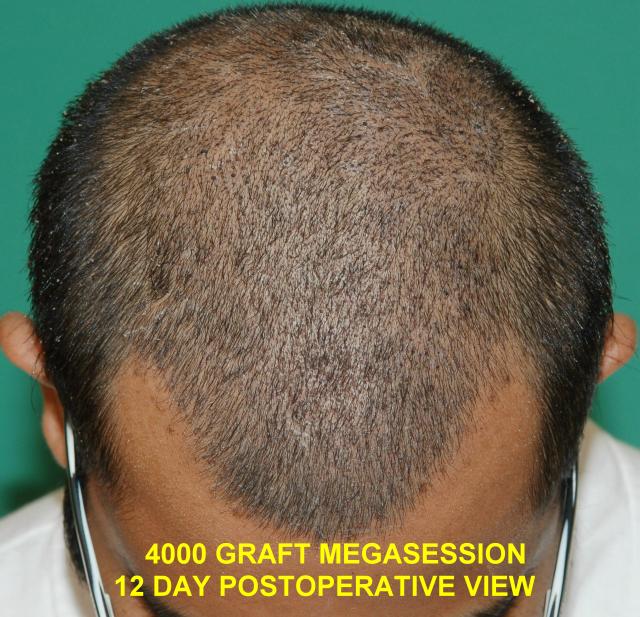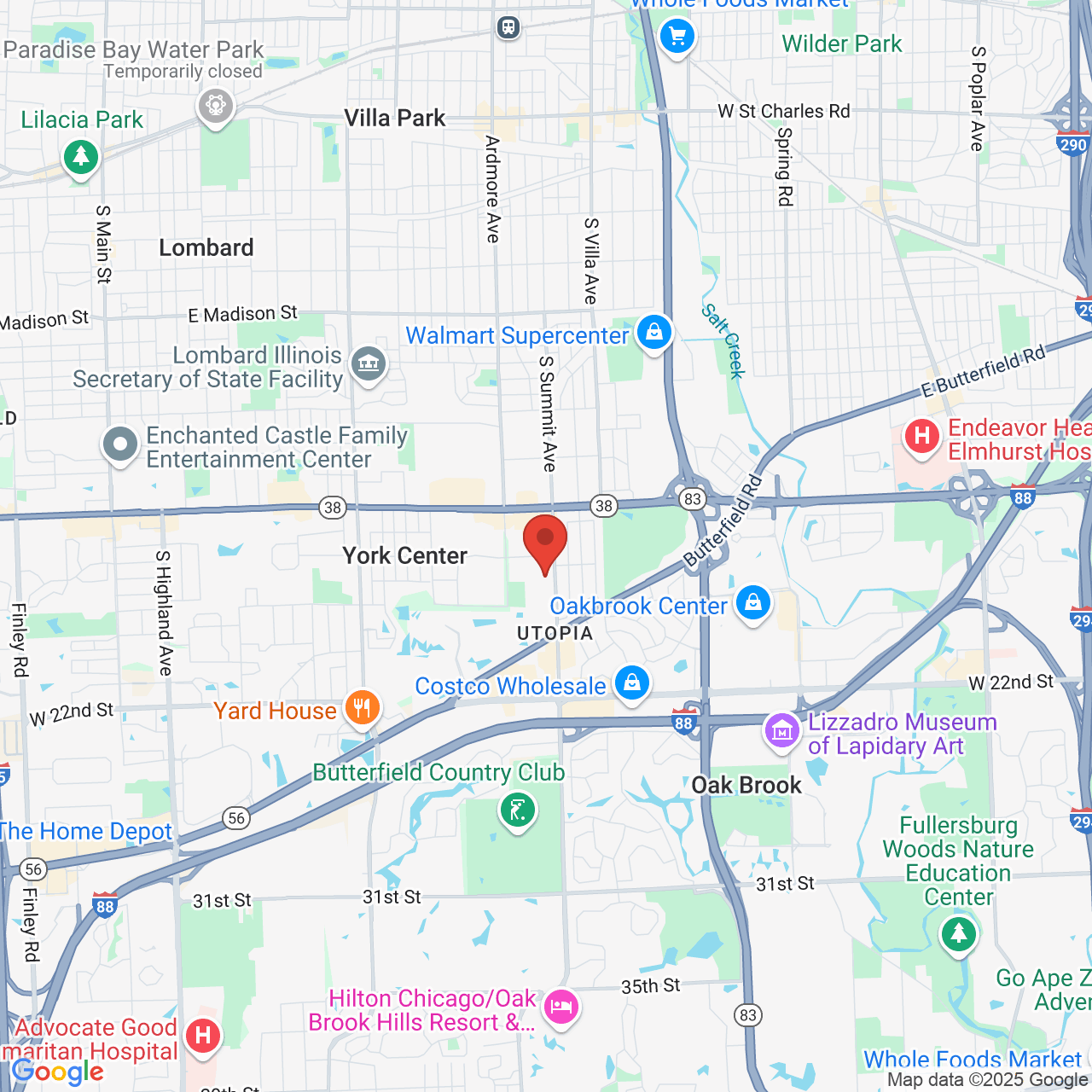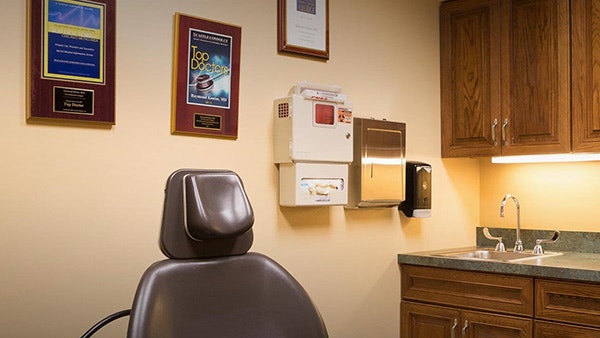Mega Sessions
Meeting a patient's expectations often necessitates the transplantation of a large amount of hair in a single, surgical session. Mega sessions are hair transplantation surgical sessions of approximately 3500-5000 grafts that require enormous amounts of time, organization ability and quality control.

To put 3500-5000 grafts into perspective, few surgeons were performing more than 1000 grafts at one time only a decade ago. Today, many surgeons still do not perform more than 2500 grafts in a single surgical session. 3500-5500 grafts represents a significant leap in surgical technology in a very short span of time.
The Advantages of a Mega Sessions
- The convenience of doing a single session rather than several sessions.
- A faster end result which results in an overall cost savings to the patient.
- Fewer surgeries and therefore less scarring on the back of the head.
Despite these advantages, the ability to successfully perform mega sessions is held by few surgeons today. It is no wonder that so few want to perform them when one considers the organization and staff that is needed. We routinely use the megasession method with great success based upon the "mega session basics" outline below. This success also relies on good doctor-patient communication, proper patient selection, and vast experience.
Mega Session Basics
Mega sessions typically involve one day of 8 to 12 hours of hair transplantation surgery.
The physical and mental demands of a mega session surgery require a large number of technically proficient and disciplined staff.
Strategies must be implemented to maintain graft viability through diligent graft hydration and proper temperature control so as to assure high graft survival.
The success of a mega session requires that the surgeon have mastered the use of micro-sized openings and special implanting techniques with high-powered magnification. The minimal scalp trauma associated with these techniques can produce exemplary results for well-qualified patients.
Patient health and safety is a consideration for long megasessions. We recommend that patients undergoing a megasession be operated on in a facility designed for safety. Our facility has essential equipment and trained individuals who can carefully monitor ECG/EKG, blood oxygen levels, blood pressure, and pulse rates. While an excellent result remains the emphasis of our technique, patient safety is also our top priority.
Density and Coverage Expectations
With respect to how much density can be restored, patients should understand that high school density of 100 grafts per square centimeter is not realistic. Limitations based on donor supply availability prevent a single megasession from producing full scalp coverage for patients with advanced hair loss patterns. Those with large bald areas may need a second surgery for full coverage or high density. In any event, most patients would prefer two megasessions as opposed to four or five smaller procedures for the cost savings and for the time saved to produce the final result.
Mega Session Candidacy in Women and Men
Women often have diffuse or progressive hair loss patterns. This is one of the main reasons that they are generally considered to be deficient candidates for mega session surgery. Age-related diffuse thinning will affect approximately one-fourth of the female population. Male pattern baldness, unlike female hair loss, has a well-recognized genetic basis. A low minority of men display female hair loss characteristics, so men are generally much better candidates. Diffuse female hair loss is significantly more complex due to the fact that female hair loss often results from a variety of causes. Undoubtedly, some females make acceptable candidates for megasession hair transplant surgery, but the majority suffer from a diffuse hair loss pattern and cannot have this surgical approach with out an inordinate risk of donor depletion or shock loss (explained in the next section). A major condition that makes female candidacy difficult is the diffuse hair loss pattern that is often found present in the donor region. This potential donor hair will continue to thin and deplete the reserves that are needed for transplantation. Female patients must be screened and a diagnosis of her hair loss should be a priority. Careful selection is a necessity for those women with diffuse loss so as to thwart unproductive surgery and to increase the chance that a solution can be found based upon proper diagnosis and non-surgical management.
In those rare cases where a male displays a female hair loss pattern, he should similarly be evaluated by an expert in hair loss and determine if non-surgical management would be the best solution. If a female or male patient has been cleared for surgery, the patient and Dr. Konior can then determine if the goals for hair restoration can be met. Fortunately, women and men selected to be good candidates for megasession surgery generally achieve excellent results.
Shock Loss Concerns with Mega Sessions
Studies and experience have revealed that over-implantation of transplanted follicles into zones of thinning hair can cause an amount of the existing hair to fall out. The key concept, generally, is the "over-implantation into a zone of thinning hair". Both men and women are susceptible to the undesired loss of some of the existing hair with a mega session, but females have demonstrated a higher risk because they more commonly have a widespread thinning as opposed to outright baldness. The causal factors relate to the compromise of blood supply to the existing hair follicles and sometimes the damage (transection) of follicles when they are closely packed. When over-implantation occurs, an amount of the existing hair sheds prematurely, peaking at six to eight weeks post surgery. Although not common in properly selected patients, a significant shedding can be visibly obvious to others and create embarrassment and anxiety. A patient who has substantial amounts of existing hair (thin hair spread throughout the top) and desires a mega session to thicken that hair should realize that the surgeon may have nothing to lose by causing temporary or permanent hair loss as a result of a mega session surgery. The patient would simply necessitate an additional, unplanned surgery and that surgeon would benefit from such a situation. As a medical consumer, male and female hair loss patients with diffused thinning should discuss the risk of shock loss and how that risk is being managed and mitigated by the surgeon. Mitigation strategies for males can include shaving the existing hair on the day of surgery, the use of Propecia or Rogaine to first stabilize the hair loss, or opting for a more conservative number of grafts as a prevention to shock loss. If indicated, females can use Rogaine or other medications to stabilize the hair loss and can similarly mandate that fewer grafts be implanted so as to preserve the existing hair. A second conservative hair restoration surgery is preferable to many than a single large surgery that can shock existing hair. Dr. Konior believes that honest and open communication can bring patient and doctor to the best strategy for achieving hair restoration goals with the least risk of shock loss. Although shock loss is not common in properly selected candidates, the risks are higher with megasession surgery and should be addressed in an unguarded atmosphere during the consultation and additionally on the day of surgery.
To contact our Oakbrook Terrace hair restoration office for a preliminary assessment of your hair loss, complete the virtual consultation form or call us at 630-932-9690.





